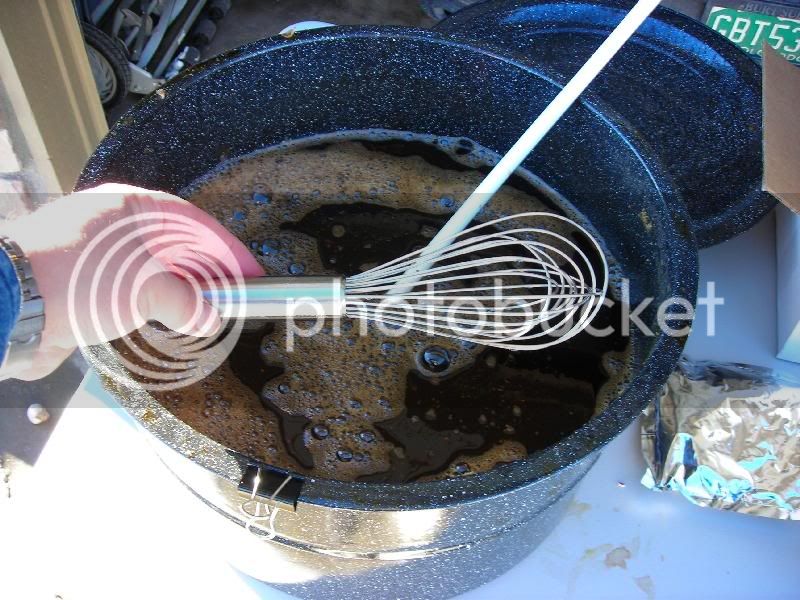It seems to me that aeration is up there with batch vs. fly sparging in terms of religion to homebrewers. Based on my experience, there is "optimum" oxygenation/aeration, and then there is "good enough" aeration, which I personally define as relatively short lag time and good attenuation.
My old method was a wire whip in the boil kettle after chilling to pitching temperature, like this:
The wire whip, in conjunction with pouring the wort into the carboy through a sanitized strainer and funnel, and pitching a large, healthy yeast culture, got the pictured 1.088 OG Imperial stout to krausen within six to ten hours (I can't guess any closer, since I was sleeping). Attenuation was 75% or so, just exactly where it should have been.
When I graduated to a keggle for boiling, I revised my aeration method to include a perforated tube at the end of my drain line to aspirate air into the stream entering the carboy, as described in
another thread The highest gravity I've brewed with that rig was 1.055. After pitching one pack of non-rehydrated dry nottingham, I had krausen within six hours.
Are those methods optimal? Maybe not, but in terms of a trade-off between complexity, investment in hardware, and an easy brew day, I'm happy with these two methods, which I think are good enough
for me.
So, OP and other new brewers, like most things in the brewing craft, there are at least 57 ways* to aerate your wort. 20+ of them are probably pretty good, and 3 or 4 of them are probably optimal. Pay attention to your lag times, and try to find something that works for you.
*80% of statistics are made up on the spot.



